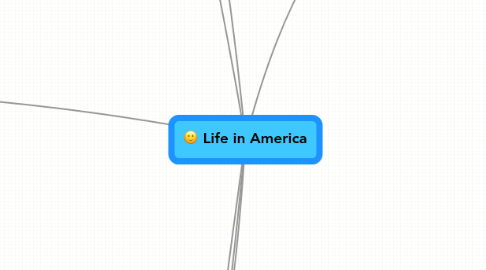
1. By the 1880's, homicides trippled in the U.S.
2. The tenement owners wanted to add as much people in their builings as they could.
2.1. Only one vent and/or window per apartment
2.2. New node
3. Provide examples of immigrants who successfully took advantage of the opportunities the United States had to offer.
4. Describe tenement life.
4.1. Early tenements lacked gas for heat, light, running water and indoor toilets.
4.2. They didn't have running water and other simple things like that
4.3. More people were segregated by race and social class than ever before.
4.4. Overcrowded
4.4.1. Many poeple lived in small apartments.
4.4.1.1. Up to 35 tenements in a 25x100 plot
4.5. Unsanitary
4.5.1. Poor Immigrants had no place to keep trash so it was left on the apartment floor.
4.5.1.1. Advertised as very nice, but was very gross and unsanitary
4.5.1.1.1. Garbage pilled up in the streets and sewage was over filling. People were not safe because diseases were everywhere.
4.5.1.2. Some buildings were so cramped that you were required to use an outhouse
4.5.1.2.1. New node
4.5.2. Garbage in the streets led to many deseases throughout country. 3 out of five babies in Chicago died before the age of 1
4.5.3. There was only one indow in one apartment out of the whole building.
4.5.3.1. Infested with rats that spread disease
4.5.3.1.1. Tuberculosis killed thousands of people living in tenements in the late 1800s and early 1900s
4.6. Crime
4.6.1. Homicides tripled and people started gangs.
4.6.2. Jail population increased by 50%
4.6.3. gangs arose and the crime rate was very high. Becauuse people were poor and couldn't afford a lot of things, they to would have steal and mob to get money.
5. What opportunities were available to immigrants when they arrived in America?
5.1. Education was free and differed between ages and ideas.
5.2. For those that didn't speak English, it was hard to find a job and make a living.
5.2.1. About 85% of the immigrants couldn't find a suitable job upon arrival.
5.2.1.1. For the first time women were allowed to have jobs and would be paid for them. 1,000,000 women were employed.
5.3. Immigrants could get jobs that other people did not want to work.
5.3.1. Immigrants had an oppertunity for a new good eductaion, that was free that they couldn't get in their old country.
5.4. Women were accepted as part of the workforce
5.5. Salary Increased
5.6. Architects
5.6.1. Maximized spaces
5.7. Public transportation
5.8. Woman had jobs
5.8.1. 1st time women could have jobs.
5.9. Enjoyable sports to watch and play
5.10. Many of the immigrants or poor whites that lived in the cities had little or nothing. Segregation was abundant and many different races were discriminated against. Many people resolved to crime and formed gangs to survive.
6. In what ways did immigrants face discrimination and prejudice upon their arrival in America?
6.1. The group called the Know-Nothings pledged to not vote or be nice to anyone that was Ctaholic.
6.2. The Chinese Exclusion Act excluded Chinese people that didn't have family citizens in America.
6.2.1. The Chinese Exclusion Act of 1882 denied Chinese immigrants immediate entrance to the country, and they could be detained at Angel Island for months.
6.3. The Nativists discriminated against the immigrants because they believed that jobs should be left for white, protestant Americans.
6.3.1. The Nativists later pressured Congress into passing the Chinese Exclusion Act of 1882. This was the first legislation to block immigrants from a specific country.
6.4. Since the protestant people in america were so against foriegners they would beat random Irish people up on the street
6.5. Homicides tripled during the 1880's
6.5.1. Jail/Prison Population increased 50%
6.6. People were separated into groups in tenements by race and ethnicity.
6.6.1. Because of the high population the discrimination was more intense
6.7. Most immagrints would have to stay in poorly serviced tennaments.
6.7.1. The living conditions were so crowded, causing lots of garbage and sewage causeing turberculosis
6.8. Immigrants were taken advantage of when at the pools.
7. Why did the majority of immigrants during this period settle in cities?
7.1. There were a larger amount of jobs and oppurtunities in the cities, so many immigrants thought they had the best chance to make a living.
7.1.1. Many of the European immigrants, especially Russian, worked in the mines of America.
7.1.2. Many of the new immigrants worked in factories, a place where people of almost any age could perform the work.
7.1.2.1. Not just men worked in the factories, but women and children worked there as well.
7.1.2.1.1. Women held over 1 million jobs
7.1.3. A few of the immigrants became architects.
7.1.4. Most immigrants settled in urban areas
7.1.4.1. Most immigrants came to New York because there were a lot of job opportnities. There were a lot of different architecture.
7.1.4.1.1. Most imigrants worked in factories or in the business of manufacturing. Life working in a factory was difficlut because not many immigrants spoke English yet, so it was hard to communicate with each other or their bosses.
7.2. They went to the cities because there were more jobs for them to get.
7.2.1. Factories
7.3. The transportation was easier and cheaper to get around to go to places that was needed.
7.3.1. Tax supported schools grew substancially and provied much better education

